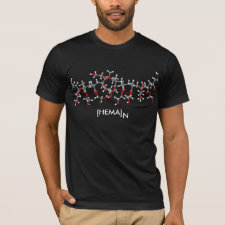
Authors: Du X, Sun XL, Zhang H, Wang ZD, Hao XG, Guan GQ, Abudula A
Article Title: A Facile Potential-Induced In-Situ Ion Removal Trick: Fabrication of High-Selective Ion-Imprinted Film for Trivalent Yttrium Ion Separation.
Publication date: 2015
Journal: Electrochimica Acta
Volume: 176
Page numbers: 1313-1323.
DOI: 10.1016/j.electacta.2015.07.084
Alternative URL: http://www.sciencedirect.com/science/article/pii/S0013468615301511
Abstract: A novel electroactive trivalent yttrium ions imprinted polymer film composed of ferricyanide embedded conductive polypyrrole (FCN/PPy) is fabricated by using a facile unipolar pulse electropolymerization (UPEP) method. The imprinted Y3+ ions can be removed in situ from the growing film by tactfully inducing potential oscillation on the film electrode based on the electric repulsion. Cyclic Voltammetry (CV) measurements combined with Electrochemical Quartz Crystal Microbalance (EQCM) are applied to characterize quantitatively the electrochemical uptake/release process of Y3+ ions in various electroactive ions imprinted polymer films (E-IIPs), including non-ion, divalent nickel ion and trivalent yttrium ion imprinted FCN/PPy composite films. It is found that the reversible uptake/release of Y3+ ions can be realized by simply regulating the operating potential applied to the Y3+ ions imprinted composite film electrode in aqueous solution of 0.1 mol L-1 Y(NO3)3 due to the unique Y3+ ion identification capability of ion imprinted cavity and the dual driving forces resulting from both PPy and FCN. From the electrode mass change of different E-IIPs, one can speculate that parts of bound water molecules around the hydrated Y3+ ions could move into the E-IIPs with the ions adsorption process. Two distinct stages, the adsorption of Y3+ ions at the surface layer of E-IIPs and the transport of adsorbed ions to inner layer of E-IIPs, should be involved in the adsorption process of Y3+ ions into the E-IIPs. For hydrated Y3+ ions adsorbed electrochemically into the surface layer of Ni2+-imprinted and Y3+-imprinted FCN/PPy composite films, the numbers of bound water molecules with Y3+ ions are estimated to be 1 and 4.6, respectively. It suggests that the Y3+ ion exchange performance in E-IIPs significantly depends on the size of ion cavity and the stereochemistry of binding sites
Template and target information: yttrium ions, Y(III)
Author keywords: Trivalent ions, ion exchange, Ion imprinted film, In-situ removal, Electroactive film



Join the Society for Molecular Imprinting

New items RSS feed
Sign-up for e-mail updates:
Choose between receiving an occasional newsletter or more frequent e-mail alerts.
Click here to go to the sign-up page.
Is your name elemental or peptidic? Enter your name and find out by clicking either of the buttons below!
Other products you may like:
 MIPdatabase
MIPdatabase









